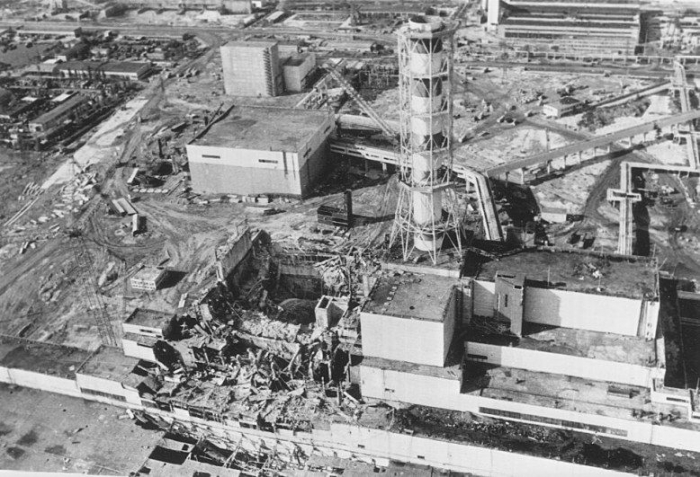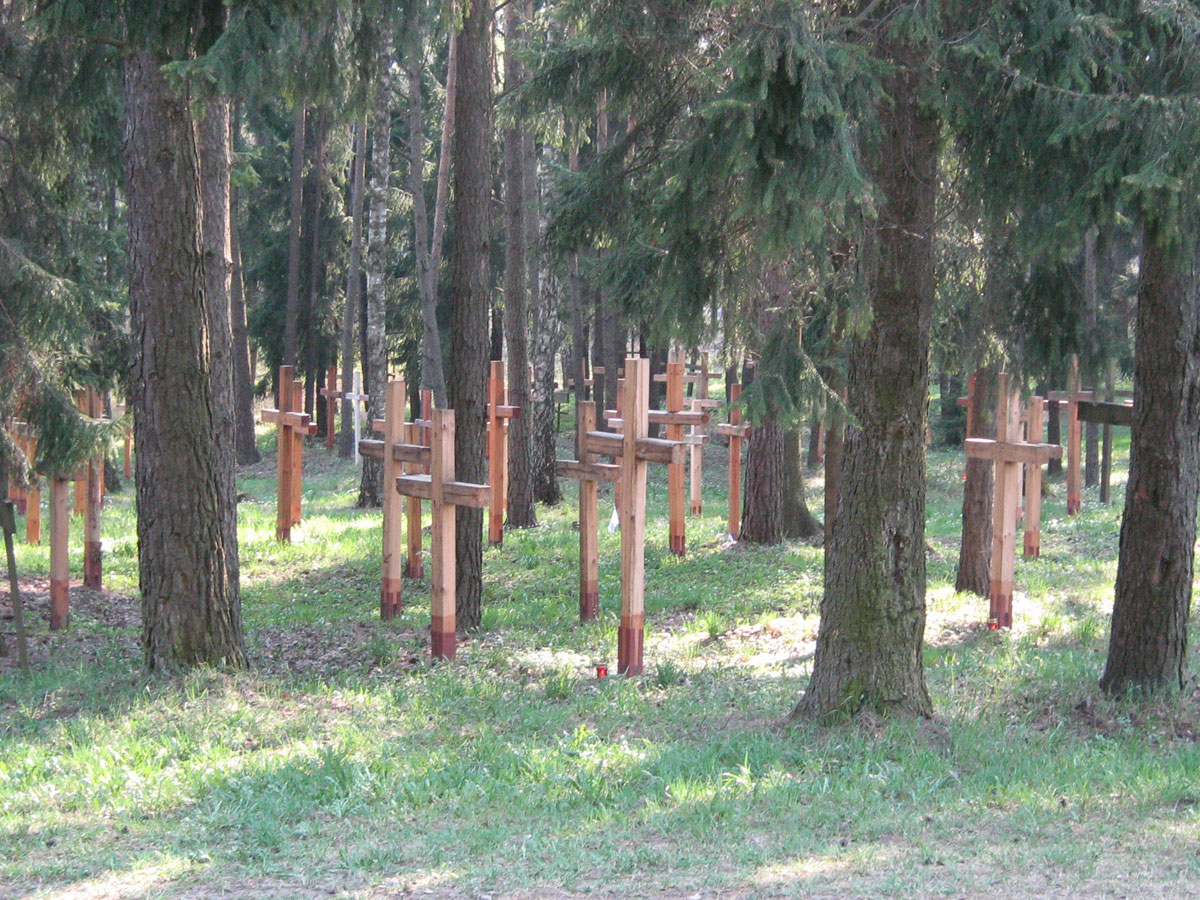On July 3, 2020, dozens of Jewish tombstones (matzevot) were uncovered during groundwork by workers of Dolia Search and Exhumation Centre. They line the small courtyard of the former NKVD headquarters, now the Prison on Lontskoho Museum in Lviv. Experts believe that human remains may be found beneath the gravestones.
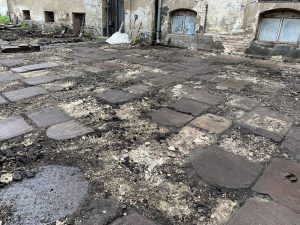
The Prison on Lontskoho Museum
The National Memorial Museum of Victims of Occupation Regimes or Prison on Lontskoho (Ukrainian: Тюрма на Лонцького) is a former detention centre in Lviv that was primarily used as a political prison of the Polish, Soviet and Nazi regimes throughout the 20th century. The Prison on Lontskoho Museum is located in one section of the former prison. Political prisoners under Polish, Austrian, Soviet and German rule were imprisoned here. From September 1939 to the end of June 1941, the building housed the NKVD headquarters and Ukrainian political prisoners. From 1941 to 1944, the building was used by the Gestapo as a remand prison. As of 1944, the premises were used by the NKVD, followed by the KGB and later, the Ministry of the Interior of Ukraine.

The Old Jewish Cemetery in Lviv
The Jewish community has been an integral part of Ukrainian society since the foundation of Lviv. The Old Jewish Cemetary, which was situated near present-day Krakivsky Market, was first mentioned in Lviv’s municipal acts in 1414. In any case, it was the oldest in the Kingdom of Galicia-Volhynia and one of the oldest in Europe. Jews from all over Halychyna (Galicia) were buried here. It was only at the beginning of the 17th century that Jewish communities in other cities and towns of Halychyna were allowed to have their own cemeteries. Prominent members of the Jewish community - scholars, philosophers, writers and rabbis - were laid to rest in the centre of the cemetery, thus forming a kind of “Jewish Pantheon”. The synagogue Beth Almin Yashan was also located on the territory of the Old Cemetery.
Countless Jewish tombstones uncovered
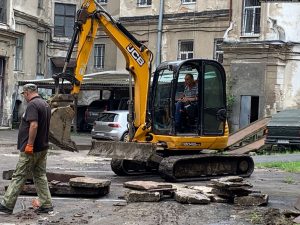
“The first hours of excavation work showed that the entire courtyard was paved with tombstones taken from Jewish cemeteries. Once again, our history bears witness to the inhumanity and criminality of the totalitarian communist regime. Paving the courtyard with tombstones instead of granite or concrete! How can anyone with a sense of humanity do such a thing? In fact, this illustrates the essence of the communist regime. After removing the headstones, we plan to check whether there are human remains under them, to put an end to all doubts and speculations,” says the director of Dolia Search and Exhumation Centre, Svyatoslav Sheremeta.

“This was a barbaric act, destroying the essence, the value of human life. We have a religious definition: if the living protect the dead, then the dead in turn protect the living. This spiritual connection prevents the world from destroying itself. We plan to study all the inscriptions, and then address the courts to return the gravestones to Yanivsky Cemetery and erect a memorial in honour of the Jewish community of Lviv. After all, not much has been written about the history of the Jewish community in Lviv. Today, a large market stands on the original Old Jewish Cemetery, where prominent scholars and philosophers are buried.” says Meilakh Sheikhet.
23 human remains found in 2016
Excavation work began in the small courtyard with the permission of the regional director of the Security Service of Ukraine (SBU), Yuriy Honcharov. Talks about exploring the area had begun way back in the summer of 2016, when excavations revealed 23 human remains in the large courtyard of the Prison on Lontskoho.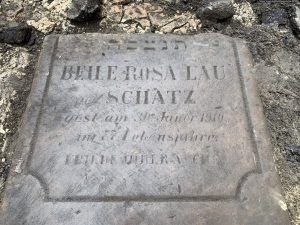
“This area [courtyard-Ed] used to belong to the regional KGB department. It was a high security area that wasn’t open to historians and researchers. We met with the administration of the Security Service of Ukraine in Lviv Oblast and held a series of talks on conducting historical and archaeological studies of this area. We know that there were mass graves in the large courtyard, discovered in the summer of 2016, so further excavations should be planned here as well.”Once all the tombstones have been removed, excavations will begin and it will be clear whether other people were executed and buried in the small courtyard of the prison.
Jewish tombstone: matzevah, plural matzevot (Hebrew - מצבה; Ukrainian - мацева)
Many matzevot (Jewish tombstones) are preserved in the Jewish cemeteries of Ukraine, Poland, Latvia, Lithuania and Moldova. The symbols depicted on the matzevot reflect the religious and social status of the deceased, his profession, personal status, etc. For example, hands above lit candles or candles burning on Sabbath candlesticks were depicted on the gravestones of women, because it was precisely their duty to light the Sabbath candles; an open book or a few rows of books adorned the gravestones of rabbis or authors of religious works; goose feathers - for scribes of sacred texts; scissors - for tailors; jewellery - for jewellers; a donation bowl, a hand giving alms - pointed to the generosity of the deceased, etc. Even death was marked by certain symbols: broken glassware, broken candles, overturned lamps. It was only at the end of the 19th century - beginning of the 20th century that the image of the Star of David (hexagonal star) began spreading throughout the Russian Empire.A new website provides information and guidance to assist leaders, activists and volunteers in the care and rehabilitation of Jewish cemeteries in Western Ukraine. Included here are “best practices” (processes, methods, tools), plus a collection of resources (texts, websites, videos) relevant to the work, selected case studies of local and other cemetery projects, and links to independent organizations working to document Jewish cemeteries in the region.









